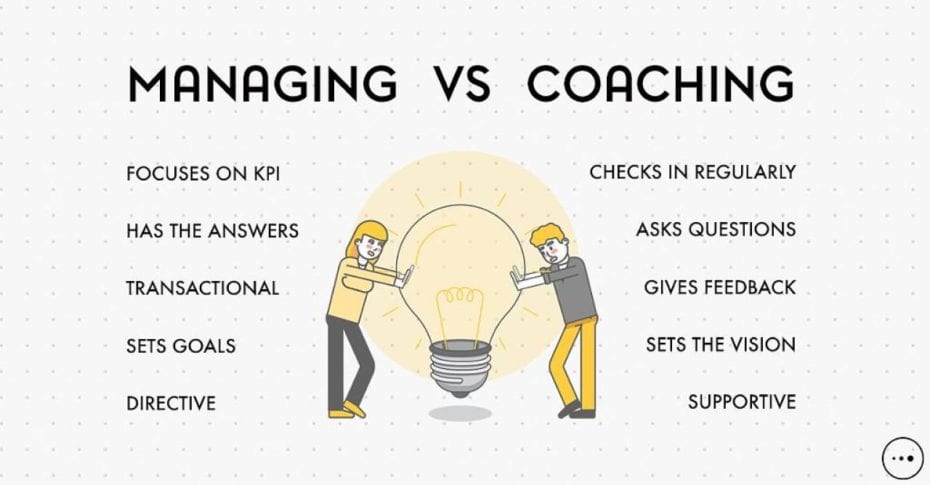Ever caught yourself thinking, “What IS the difference between managing and coaching your team anyway?” – if you’re nodding your head, know that you’re not alone in this pondering.
While there’s always plenty of talk in the leadership community about management styles, coaching is a concept that has increased in popularity in recent years. With an increase in popularity comes great responsibility… and sometimes, great confusion.
While the terms ‘managing’ and ‘coaching’ are sometimes used interchangeably, there are some sizeable differences between the two approaches, mainly in the outcomes that they each achieve. Curious? Let’s dig a little deeper into these differences so that you can determine which approach is best for your team right now, and identify which approaches you’ve been taking throughout your career.
What is the Difference Between Managing and Coaching?
The ‘Traditional’ Management Style
When we look at a traditional management approach, it typically looks something like this:
- The manager comes up with a plan and gives instruction on how the team will execute
- The manager is focused on achieving clear KPIs and managing performance using these tools
- There’s a hierarchal structure and overall top-down approach to management
- The managers review team performance annually based on company policy
The Coaching Approach
On the other hand, when leaders take a coaching approach, their focus shifts to:
- Asking questions to help team members come up with creative solutions
- Challenging their team’s perceived roadblocks and co-create strategies for improvement
- Helping to generate motivation for every task and goal
- Consistently checks in with individual team members and manages performance
- Shifting teams from ticking boxes towards being more cohesive, curious and collaborative

What approach do the best managers take?
Researchers at Gartner surveyed 7,300 employees and managers across a variety of industries, focusing on answering one important question – what are the best managers doing to develop employees in today’s busy work environment?
After analysing 90 variables, the researchers identified four distinct coaching profiles; Teacher Managers, Always-On Managers, Connector Managers and Cheerleader Managers.
Here’s a summary on these coaching profiles based on the report from Gartner:
Teacher Managers
This type of manager coaches’ employees based on their own knowledge and experience, providing advice-orientated feedback.
Always-On Managers
These managers provide continual coaching and put effort into staying on top of their employees’ development.
Connector Managers
Managers that fall under this category give targeted feedback in their areas of expertise; otherwise, they connect employees with others on the team or elsewhere in the organisation who are better suited to the task.
Cheerleader Managers
These managers take a hands-off approach, delivering positive feedback and putting employees in charge of their own development.
The Benefits of Taking a Coaching Approach
Teams that put on their thinking caps and are eager to solve problems (rather than complain the process doesn’t work) are the direct result of leaders who’ve chosen to take a coaching approach.
If you want to improve the coaching capability of your frontline leaders, or even yourself, take a look at our Coaching Mastery program; it’s designed to do exactly that.
We’ve spent the last three years crafting this particular program, and up to this point we’ve had over 1,000 leaders through it who’ve achieved some incredible results. It’s a firm favourite amongst organisations who prioritise leadership development with the ultimate goal to create teams that thrive. To create a workplace culture people want to be a part of, you’ve got to first make sure you’ve set your leaders up with the skills for success.


